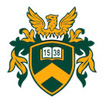Novák Ádám (szerk.): Fontes Memoriae Hungariae III. Varsóban őrzött magyar vonatkozású oklevelek, 1439–1489. Közreadja: Novák Ádám, Tóth Orsolya és Tóth Péter (Debrecen, 2019)
Sobiesław Szybkowski: Polish-Hungarian Relations between 1437 and 1490. A Short Introduction
X which is proven by the commission he issued on 17 October 1439 for the legates who were sent to the Polish king.25 Albert most probably did not live to hear their account of the meeting with Vladislaus III because he died on 31 October, leaving behind his two daughters, Anne and Elisabeth, and his pregnant wife, Elisabeth of Luxemburg, the only heiress of Emperor Sigismund. On his deathbed, Albert drew up a testament in which he made certain arrangements in case his wife would give birth to a son. According to his last will, Elisabeth of Luxemburg and Frederick III, Duke of Styria from the Leopoldine line of the Habsburgs, were supposed to become the guardians of the potential heir and successor to the Hungarian and Bohemian thrones and the duchy of Austria.26 However, the last will left by Emperor Sigismund’s deceased son-in-law was not accepted in Hungary. The most important reason behind this situation was the Hungarian magnates’ belief that the regency imagined by the deceased king would not protect the country against the Turkish threat, especially in light of the last unsuccessful campaign against the Turks led by Albert. The Diet of the Kingdom of Hungary convened on 1 January 1440, and decided to elect a new monarch. The rights of Albert and Elisabeth’s unborn child were disregarded since the child could have turned out to be a girl, not a boy. Two candidates were named during the session: Vladislaus III of Poland and Lazar Branković, the son of Đ ura đ , ruler of Serbia. 27 Even before the Diet started considering Vladislaus III as a candidate, it had already been known in Poland that the young Jagiellon had a significant chance to be elected King of Hungary. It compelled the Polish king and Curia Regis to send a legation to Hungary. The legation was headed by Jan Taszka of Koniecpol, Chancellor of the Kingdom of Poland and by Piotr of Kurów, Castellan of Sącz. This move must have been praised and blessed by Zbigniew Oleśnicki, Bishop of Cracow. He was the leader of the faction of oligarchs in Lesser Poland, which was the strongest faction on the Polish political scene at the time. When the chancellor’s legation arrived at Buda, Vladislaus III was presented as the official candidate. The legation initiated preliminary negotiations on the basis of the conditions which were agreed to at the election and returned back to 25 Codex diplomaticus Regni Poloniae et Magni Ducatus Lituanie . Vol. I. Ed. Dogiel, Maciej. Vilnae, 1758. (further: Dogiel) 154–155.; Heck, 1964. 193–195.; Biskup,1982A. 412–413.; Dąbrowski, 2014. 20–21. 26 Baczkowski, Krzysztof: Stosunek leopoldyńskiej linii Habsburgów do walki o tron węgierski po śmierci Albrechta II. In: Świat chrześcijański i Turcy Osmańscy w dobie bitwy pod Warną . Ed. Quirini-Popławska, Danuta. Kraków, 1995. (Zeszyty Naukowe Uniwersytetu Jagiellońskiego. Prace Historyczne 119.) (further: Świat chrześcijański ). 16–26. (further: Baczkowski, 1995A) 16.; Dąbrowski, 2014. 26. 27 Philippi Callimachi Historia de rege Vladislao . Ed. Lichońska, Irmina, Komornicka, Anna. Warszawa, 1961. 21–23.; Kurtyka, 1997. 317–318.; Olejnik, Karol: Władysław III Warneńczyk (1424–1444). Kraków, 2007. 89–91.; Dąbrowski, 2014. 25–27.
